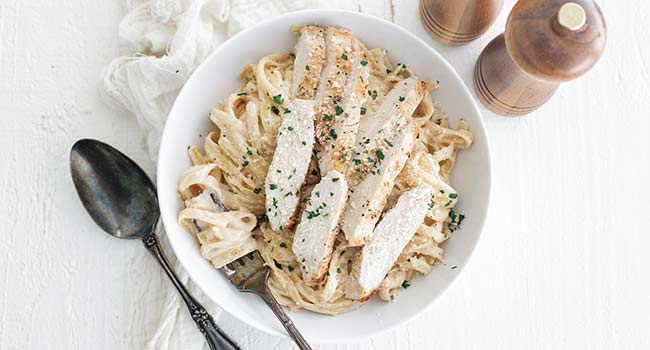Have you ever sat down at an Italian restaurant, taken that first heavenly bite of chicken alfredo, and wondered “what magic is in this dish?” I certainly have! As a home cook who’s spent years perfecting this creamy comfort food, I’m excited to break down all the ingredients that make chicken alfredo the beloved dish it is today.
Whether you’re a kitchen newbie or a seasoned chef looking to perfect your recipe, understanding what goes into authentic chicken alfredo is your first step to pasta perfection. So let’s dive into the delicious world of this Italian-American favorite!
The Core Components of Chicken Alfredo
At its heart chicken alfredo consists of three main components
- Tender chicken (usually breast meat)
- Rich Alfredo sauce (a creamy dream)
- Pasta (traditionally fettuccine)
Let’s break down each component in detail
The Protein Star: Chicken
The chicken component typically features:
- Boneless, skinless chicken breasts (though thighs can be used for richer flavor)
- Seasonings usually including:
- Salt
- Pepper
- Garlic powder
- Onion powder
- Italian seasoning
Most recipes call for chicken to be seasoned, then either grilled, pan-fried, or baked until golden brown and cooked through (reaching an internal temperature of 165°F). The cooking method impacts both the flavor profile and texture of your final dish.
The Creamy Heart: Alfredo Sauce
This is where the magic happens! A traditional Alfredo sauce is surprisingly simple but relies heavily on high-quality ingredients:
- Butter – Unsalted butter is preferred (½ to 1 stick, depending on the recipe)
- Heavy cream (about 2 cups) – This is the cornerstone of creaminess
- Parmesan cheese – Freshly grated, authentic Parmigiano-Reggiano is best
- Garlic – Fresh minced or grated
- Seasonings – Salt, pepper, and sometimes a pinch of nutmeg
Traditional Alfredo doesn’t use flour or thickeners – the sauce achieves its perfect consistency through reduction and the emulsion of fat from butter and cream combined with the protein in the cheese.
The Classic Pasta: Fettuccine
While any pasta can work in a pinch, there’s a reason fettuccine is the traditional choice:
- Fettuccine pasta – These wide, flat noodles have more surface area for the sauce to cling to
- Other common pasta alternatives include:
- Linguine
- Pappardelle
- Spaghetti
- Penne (especially good if you want sauce to get inside the pasta)
Beyond the Basics: Common Additions and Variations
The beauty of chicken alfredo is its versatility. Once you master the basics, you can customize to your heart’s content!
Popular Additions for Extra Flavor
- Herbs – Fresh parsley, basil, or thyme can brighten the dish
- Vegetables – Common additions include:
- Broccoli florets
- Mushrooms
- Peas
- Asparagus
- Spinach
- Sun-dried tomatoes
- Bacon or pancetta – For a smoky flavor boost
- White wine – A splash can add depth to the sauce
- Lemon zest – For brightness that cuts through the richness
- Red pepper flakes – For a hint of heat
Substitutions for Dietary Needs
Many people adapt chicken alfredo to suit dietary restrictions:
-
Cream alternatives:
- Half-and-half (for a lighter sauce)
- Milk (will be much thinner)
- Cream cheese (creates a thicker, tangier sauce)
- Plant-based creams (cashew or coconut cream for vegan versions)
-
Cheese alternatives:
- Dairy-free parmesan options
- Nutritional yeast (for vegan versions)
-
Pasta alternatives:
- Gluten-free pasta
- Zucchini noodles
- Spaghetti squash
-
Protein alternatives:
- Shrimp (for a seafood twist)
- Grilled tofu (for vegetarian options)
- Plant-based chicken substitutes
Making the Perfect Chicken Alfredo: Key Tips
Now that we know all the ingredients, here are some pro tips I’ve learned over the years:
For the Chicken:
- Season generously – Don’t be shy with your spices
- Don’t overcook – Chicken breasts can dry out quickly
- Let it rest – Allow the chicken to rest before slicing to keep juices inside
- Slice thinly – Cut chicken into 1/4 to 1/2-inch slices for the perfect bite
For the Sauce:
- Grate your own cheese – Pre-shredded cheese contains anti-caking agents that prevent smooth melting
- Heat gently – Too high heat can break your sauce
- Reduce properly – Let the cream simmer until it starts to thicken before adding cheese
- Reserve pasta water – Keep about 1/2 cup of starchy pasta water to thin sauce if needed
For the Pasta:
- Salt your water – It should taste like the sea
- Cook until al dente – Slightly firm pasta stands up better to the sauce
- Don’t rinse – The starch helps the sauce adhere to the pasta
- Finish cooking in the sauce – Add pasta directly to the sauce and toss to coat
Common Questions About Chicken Alfredo
Can I use pre-shredded Parmesan cheese?
While convenient, pre-shredded Parmesan isn’t recommended. It contains cellulose to prevent clumping, which can make your sauce grainy instead of silky smooth. Always opt for a block of Parmesan that you grate yourself.
What’s the best way to cook the chicken?
It really depends on your preference! Pan-frying gives a nice golden crust, grilling adds smoky flavor, and baking is hands-off and reliable. Whichever method you choose, make sure to cook to 165°F internal temperature.
How do I prevent my sauce from becoming too thick?
Avoid overcooking your sauce. Remember that it will continue to thicken as it cools, so remove it from heat just before it reaches your desired consistency. If it does get too thick, a splash of reserved pasta water can thin it out.
Can I make chicken alfredo ahead of time?
Ideally, chicken alfredo should be made and served right away. The sauce tends to separate when refrigerated and reheated. If you must make components ahead, the chicken can be cooked up to a day in advance, but I recommend making the sauce fresh.
How long will leftovers last?
Leftovers can be stored in an airtight container in the refrigerator for up to 3-4 days. Just be aware that the sauce may separate when reheated. Warm leftovers gently over low heat, stirring frequently.
A Brief History of Chicken Alfredo
Interestingly, authentic Italian Alfredo sauce (known as “Fettuccine al burro” or “buttered fettuccine”) was originally just pasta tossed with butter and Parmesan – no cream at all! It was created by Alfredo di Lelio in Rome in the early 1900s.
The addition of cream and chicken is actually an American adaptation that became popular in the United States. Today, this creamy version is what most people think of when they hear “Alfredo sauce.”
Perfect Pairings for Chicken Alfredo
To round out your meal, consider serving chicken alfredo with:
- A simple green salad with vinaigrette (the acidity balances the richness)
- Garlic bread (because more carbs is always good!)
- Roasted asparagus or broccoli
- A crisp, dry white wine like Pinot Grigio or Sauvignon Blanc
My Go-To Chicken Alfredo Recipe
After years of experimenting, here’s my favorite chicken alfredo recipe that always gets rave reviews:
Ingredients:
- 1 pound boneless, skinless chicken breasts
- 1 teaspoon Italian seasoning
- 3/4 teaspoon kosher salt (for chicken)
- 1/4 teaspoon black pepper
- 2 tablespoons olive oil
- 1 tablespoon butter (for cooking chicken)
- 8 tablespoons (1 stick) butter (for sauce)
- 2 cups heavy whipping cream
- 2-3 cloves garlic, minced
- 3/4 teaspoon garlic powder
- 3/4 teaspoon Italian seasoning (for sauce)
- 1/4 teaspoon salt (for sauce)
- 1/4 teaspoon pepper (for sauce)
- 2 cups freshly grated Parmesan cheese
- 16 ounces fettuccine pasta
- Fresh parsley, chopped (for garnish)
Instructions:
- Season chicken with Italian seasoning, salt, and pepper.
- Heat olive oil in a large skillet over medium-high heat. Add chicken and cook until golden brown (about 5-7 minutes per side). Add 1 tablespoon butter between them while cooking.
- Transfer chicken to a cutting board and let rest for a few minutes before slicing.
- Meanwhile, cook fettuccine according to package directions in salted water. Reserve 1/2 cup pasta water before draining.
- In the same skillet used for chicken, add butter cubes over medium-low heat and let melt.
- Add cream, minced garlic, garlic powder, Italian seasoning, salt, and pepper. Whisk until combined.
- Bring to a gentle simmer (don’t boil!) and cook for 3-4 minutes, whisking constantly, until it starts to thicken.
- Remove from heat and stir in Parmesan cheese until melted and smooth.
- Add drained pasta to the sauce and toss to coat.
- Slice chicken and arrange over pasta.
- Garnish with extra Parmesan and chopped parsley.
Wrapping Up
There you have it – everything you need to know about the ingredients in chicken alfredo! This classic comfort food might seem fancy, but with quality ingredients and a bit of technique, you can create restaurant-quality chicken alfredo right in your own kitchen.
Remember, the key to great alfredo is simplicity – let those few ingredients shine by using the best quality you can afford, especially when it comes to the cheese and cream.
What’s your favorite way to make chicken alfredo? Do you have any secret ingredients you add to make it special? I’d love to hear your variations in the comments below!
Happy cooking!
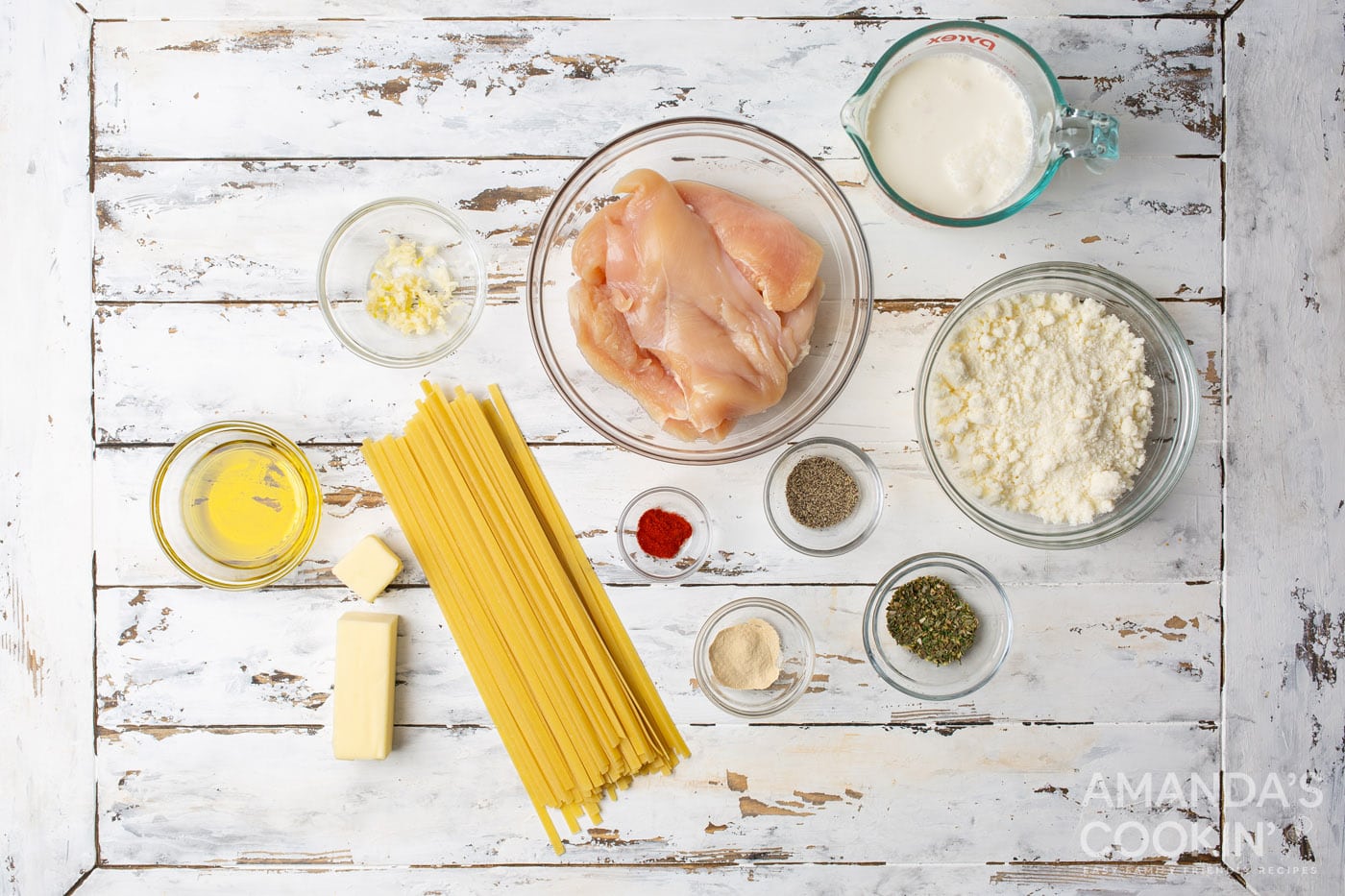
How to Make Chicken Alfredo
Prep the chicken: I slice each chicken breast half widthwise to create thin cutlets.
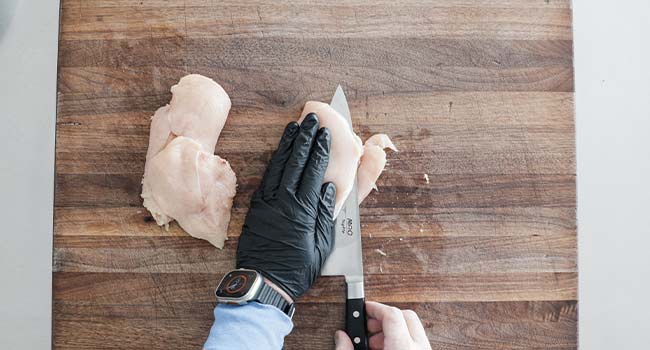
Season the chicken: I seasoned both sides of the chicken cutlets with salt and pepper.
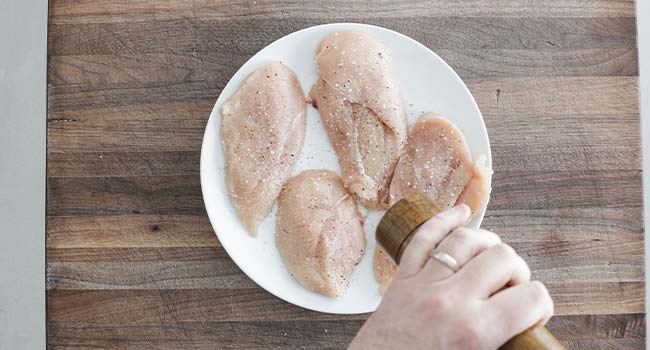
Sear the chicken: When I’m ready to cook, I heat olive oil in a large rondeau pan or deep skillet over high heat until the oil starts to smoke. I sear the chicken until it develops a golden-brown crust. Then, I flip the pieces, reduce the heat to medium, and sear the other side. I set the cooked chicken aside on a plate.
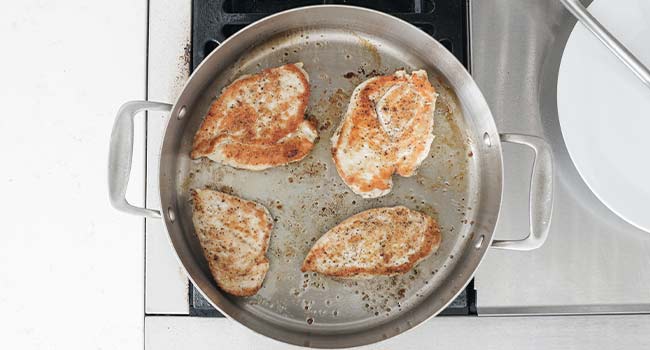
Sauté the aromatics: In the same pan, I add more olive oil, along with the minced garlic and shallots, and sauté them just until fragrant.
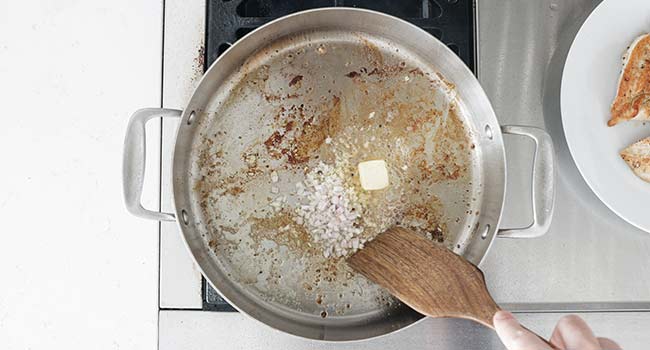
Make the alfredo sauce: I pour the heavy cream into the pan and stir in the parmesan until the sauce thickens. I taste the sauce, season it with salt and pepper as needed, and then take it off the heat.
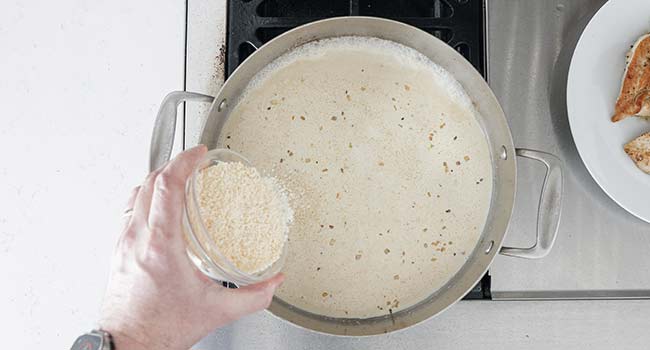
Cook the pasta: I cook it in a large pot of boiling salted water until it’s al dente. Then, I reserve 1 cup of the pasta cooking water before draining the rest.
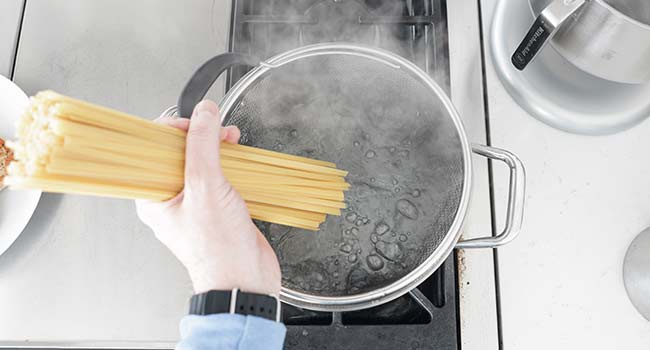
Combine and toss: I dump the cooked pasta into the pan with the alfredo sauce and toss it all together until every strand is coated. If the sauce feels too thick, I use the reserved pasta water to thin it out until it reaches the perfect creamy consistency.
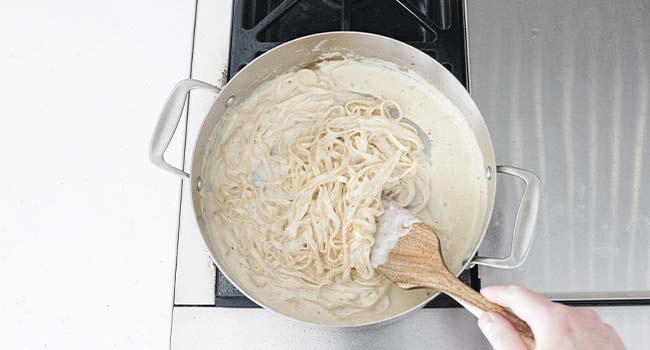
Plate and serve: Finally, I slice the seared chicken, plate it over the creamy alfredo-smothered pasta, and dig in.
